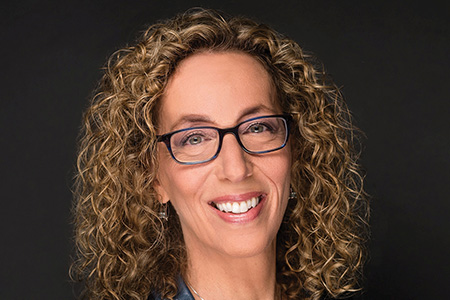How To Reduce COGS & Expedite Commercial-Scale CGT Manufacturing (Part 1)

By Erin Harris, Editor-In-Chief, Cell & Gene
Follow Me On Twitter @ErinHarris_1
As seen in Life Science Leader
Speak directly to any CGT (cell and gene therapy) executive, and you’re likely to hear about the two things that, in some way, keep them up at night when it comes to their jobs — time and cost. I asked some of the cell and gene therapy sector’s most quantifiably successful leaders, Christine (Chris) Fox, president at Novartis Gene Therapies; Karen Kozarsky, Ph.D., founder and CSO at SwanBio Therapeutics; and Vaishali Shukla, VP, quality commercial manufacturing at Kite Pharma, to weigh in on a topic that affects every CGT company — manufacturing. Here, you’ll glean a better understanding of how to drive down COGS and expedite commercial-scale manufacturing in the CGT space.
What role will or should AI, machine learning, and automation play in commercial manufacturing of CGTs going forward?
 Vaishali Shukla: AI, machine learning, and automation are key components of the future of commercial manufacturing, both for cell and standard therapies. Automation can alleviate logistical inefficacies and mitigate human errors, allowing more streamlined processes for autologous cell therapies. In the process of evolving to AI-based processes, it will be critical to utilize closed-system technology, which integrates end-to-end systems from a single vendor versus an open system, which can introduce variability, given involvement from multiple vendors. Additionally, it will be important to develop and include robust quality control (QC) assays for any automated processes to ensure that therapeutics are meeting high quality standards.
Vaishali Shukla: AI, machine learning, and automation are key components of the future of commercial manufacturing, both for cell and standard therapies. Automation can alleviate logistical inefficacies and mitigate human errors, allowing more streamlined processes for autologous cell therapies. In the process of evolving to AI-based processes, it will be critical to utilize closed-system technology, which integrates end-to-end systems from a single vendor versus an open system, which can introduce variability, given involvement from multiple vendors. Additionally, it will be important to develop and include robust quality control (QC) assays for any automated processes to ensure that therapeutics are meeting high quality standards.
What are the focus areas for improving QA/QC in the next few years?
Vaishali Shukla: Given nuances specific to autologous cell therapy and considerations that arise from manufacturing the ultimate “custom product,” where each batch represents a product for just one patient, the top QA/QC priorities for cell therapies are unique in comparison to the rest of the biotech industry.
One focus area relates to ensuring robust processes for chain of custody and chain of identity for patients’ samples; because our manufacturing sites can process hundreds of patients’ samples weekly, this aspect is critical. Additionally, cell therapies often require cryo-preservation and specific temperature controls, so there are several considerations and nuances related to packaging configurations that ensure the therapy can be shipped safely across a vast global shipping area. Being proactive in these and all other areas is critical, given that any QA/QC finding could impact the ability of an individual patients to receive their treatment. This patient-first perspective can help to frame the importance of compliance, reliability, and quality in cell therapy manufacturing.
Regarding AAV vectors, what remain the sector’s top challenges?
 Karen Kozarsky: Manufacturing is a heavy burden. Having the ability to make enough AAV vectors in a timely fashion for clinical trials is difficult. Manufacturing gene therapies is an expensive process that everyone wants to make more efficient. It comes down to a few things: cost of goods, physical facilities, and finding and retaining talent. Not to mention how complicated a task it is and how few people can do it. Manufacturing of AAV vectors requires new production of those vectors in cells in culture, which is a more complicated process than chemical manufacturing. In addition to steps needed to optimize the efficiency of generating these vectors, purification steps require removal of the cell-derived components and proteins away from the viral vectors while maintaining potency.
Karen Kozarsky: Manufacturing is a heavy burden. Having the ability to make enough AAV vectors in a timely fashion for clinical trials is difficult. Manufacturing gene therapies is an expensive process that everyone wants to make more efficient. It comes down to a few things: cost of goods, physical facilities, and finding and retaining talent. Not to mention how complicated a task it is and how few people can do it. Manufacturing of AAV vectors requires new production of those vectors in cells in culture, which is a more complicated process than chemical manufacturing. In addition to steps needed to optimize the efficiency of generating these vectors, purification steps require removal of the cell-derived components and proteins away from the viral vectors while maintaining potency.
What are the focus areas for improving AAV-based therapies in the next few years?
Karen Kozarsky: I believe we need to prioritize improving efficiency of the vectors and payloads in the next few years, as both will be critically important in the overall success of gene therapies. By changing the AAV capsid and the payload and making them more targeted, we are delivering more effective solutions. One way of doing this is by using different promoters for cell type expression that can modulate the level of expression for each disease. Each therapy will have a different level of expression depending on the disease it targets. By the same token, in some cases where you want to blast gene expression, you can, but in others, you can hold back where less is necessary. Targeting the right cell types and expression levels makes gene therapies potentially more effective and safer for a variety of diseases.
